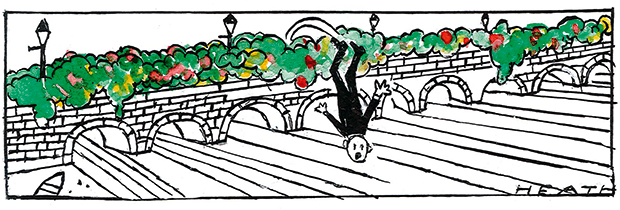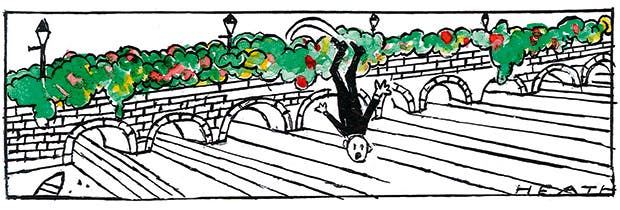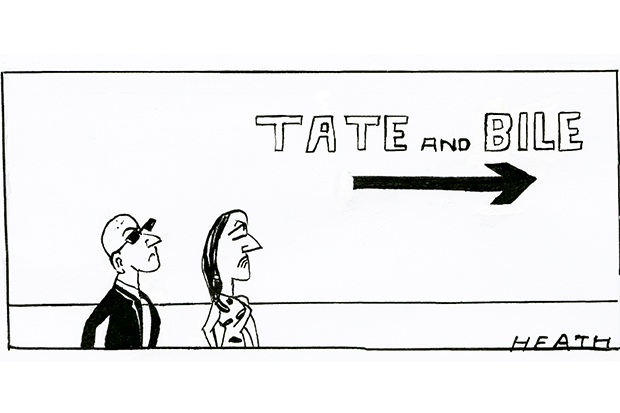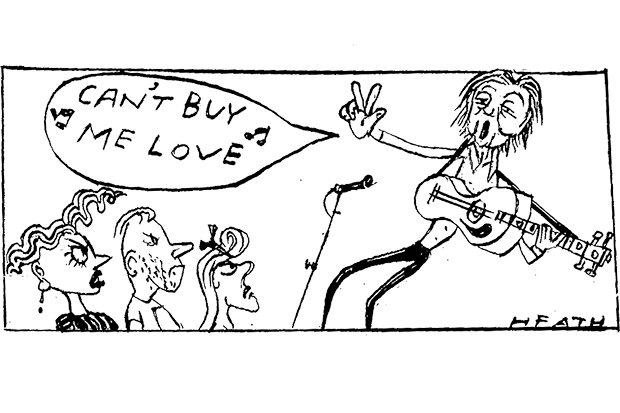Thomas Heatherwick is the most famous designer in the United Kingdom today and has an unquestionable flair for attention-grabbing creations. Before 2010 he was mostly known for a splashy public sculpture in Manchester, ‘B of the Bang’ (2005). Within weeks bits started to fall off. In 2009 it was dismantled. This was his most celebrated failure. But he has had others. An even earlier commission, ‘Blue Carpet’ (2002), a showy repaving of a miserable part of Newcastle city centre, lost its colouring completely within a decade (despite assurances from Heatherwick that its colour would last for a 100 years).
He was propelled to global celebrity in 2012 when an audience of a billion watched his Olympic cauldron light up. His 204 metallic petals, lit by white-robed ephebes, created a global sigh and a single flaming Olympic flower. A centrepiece of Danny Boyle’s opening ceremony, it gave rise to an intellectual-property dispute over a startlingly similar design, ultimately settled by LOCOG although fiercely disputed by Heatherwick himself.
All this pizzazz has brought him increasingly ambitious commissions from richer and richer clients from California (corporate HQ) to Singapore (a university) to Abu Dhabi (an underground park). Fiercely critical of what he sees as a quintessentially British talent for cynicism and fear, he has become a walking TED talk: relentless in his positivity but blind to the social criticism that goes with becoming the can-do designer in an era of intense wealth polarisation. It is unsurprising that his brand of design, with its strong wow factor and skin-deep social content, should be so popular with tax-avoiding corporations and states built on slave labour.
Heatherwick has also become the quintessential designer for 21st-century London, a rather different client. At the same time as his Olympic cauldron was bursting into flame, his new Routemaster buses were unleashed on the city. Gloriously wacky to look at, they have proved cramped and susceptible to overheating. A row over whether windows should open or not has led to a £2 million refit of the fleet and the get-on, get-off feature that attracted so many people has all but been dropped. They are also very expensive.
But they are not the only expensive project he is proposing for London. Vying with the 800-strong fleet of buses on cost is the proposed Garden Bridge. Inspired in part by the success of New York’s High Line, a green walkway made out of a former elevated rail track on stilts, the bridge’s current budget is five times the square-foot cost of the High Line. The projected cost has risen from £60 million to £175 million with a £3.5 million annual running cost. Even on that budget there is a £30 million funding shortfall and doubtless the costs will rise in the construction. Work is slated to begin in January.
Heatherwick describes the Garden Bridge as something we are giving to ourselves but is increasingly set on steam-rollering opposition from Lambeth Council and others (which he recently described as ‘ludicrous and devastating’ in the Standard). His principal concern must be the mayoral election. But to rush this underfunded white elephant through is to get one over on London. And London is not Dubai or Google. Our pockets are not limitless, we live in an age of cuts; public debate and criticism are sacred to us and if we have to pamper ourselves most of us don’t book into a suite at Claridge’s.
Got something to add? Join the discussion and comment below.
Get 10 issues for just $10
Subscribe to The Spectator Australia today for the next 10 magazine issues, plus full online access, for just $10.
You might disagree with half of it, but you’ll enjoy reading all of it. Try your first month for free, then just $2 a week for the remainder of your first year.













Comments
Don't miss out
Join the conversation with other Spectator Australia readers. Subscribe to leave a comment.
SUBSCRIBEAlready a subscriber? Log in